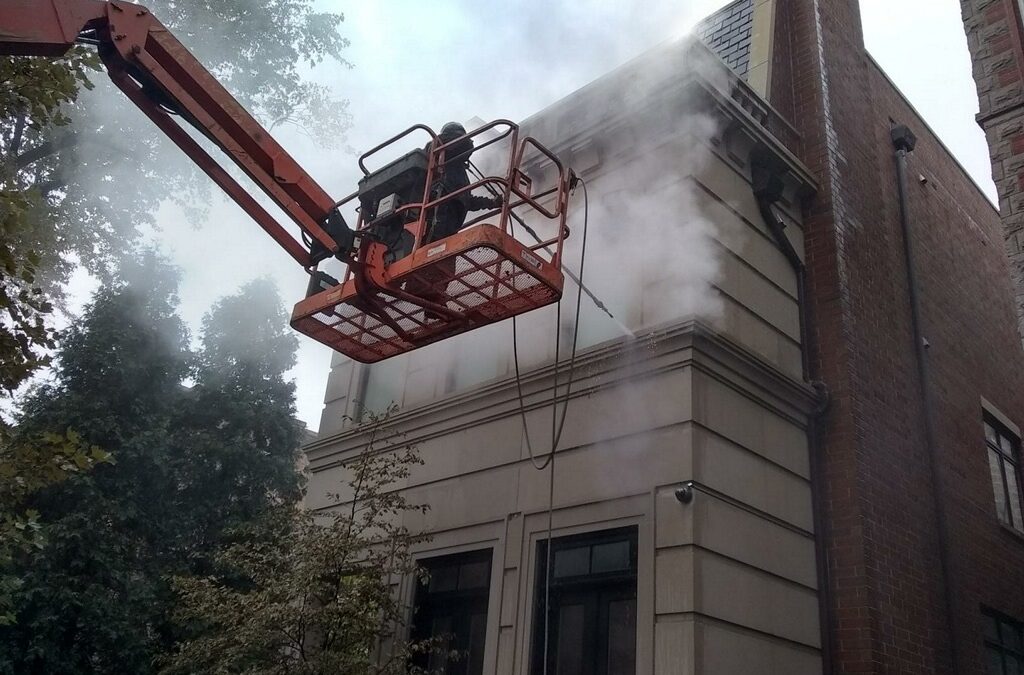
Limestone Damage Caused by Improper Cleaning Methods
Here are some common examples of limestone damage caused by improper cleaning methods:
Etching from Inexperienced Pressure Washing Companies and Homeowners: This by far is the #1 leading cause of limestone etching. So many jobs I estimate for cleaning that have been damaged forever because of the inexperience of the previous homeowner or a company that does not specialize in limestone cleaning trying to perform normal pressure washing on limestone.
I am leaving an example below of a 3 million dollar home just built in 2023 that was ruined because in 2024 just because the home manager was trying to keep up with the home. The entire facade of limestone was etched by Bubble window cleaning in Lincoln Park Chicago. I am not trying to knock anyone here, this is just a sad story and I would hate for this to happen by anyone else. Please perform your due diligence before cleaning your limestone or hiring a company to clean or pressure washing the limestone on your home.
Etching from Acidic Cleaners – Limestone is highly sensitive to acidic solutions like vinegar, bleach, or muriatic acid. When these substances are used, they dissolve the calcite in the stone, leading to dull spots, rough textures, and permanent surface damage.
Spalling and Flaking from Improper Washing – Using excessive water pressure can force moisture deep into the stone, causing it to break apart from within. Over time, this leads to spalling (surface peeling) and flaking, which weakens the stone and makes it prone to further deterioration.
Discoloration from Harsh Chemicals – Some chemical cleaners contain strong alkalis or harsh detergents that can react with the minerals in limestone. This can cause unsightly stains, yellowing, or a chalky residue that’s difficult to remove.
Pitting and Surface Erosion from Abrasive Cleaning – Sandblasting or using harsh brushes can wear down the soft surface of limestone, creating pits and uneven textures. This can permanently alter the stone’s appearance and make it more susceptible to future staining and damage.
Biological Growth from Excessive Moisture – If limestone is cleaned with too much water and not dried properly, it can encourage algae, mold, and mildew growth. This can cause green or black staining and, over time, weaken the stone’s structural integrity.
Cracking from Freeze-Thaw Cycles – If water is improperly introduced into limestone during cleaning, it can seep into cracks and pores. When temperatures drop, the water freezes and expands, leading to cracks and breakage over time.
If you would like to know more please call 312-384-0044





